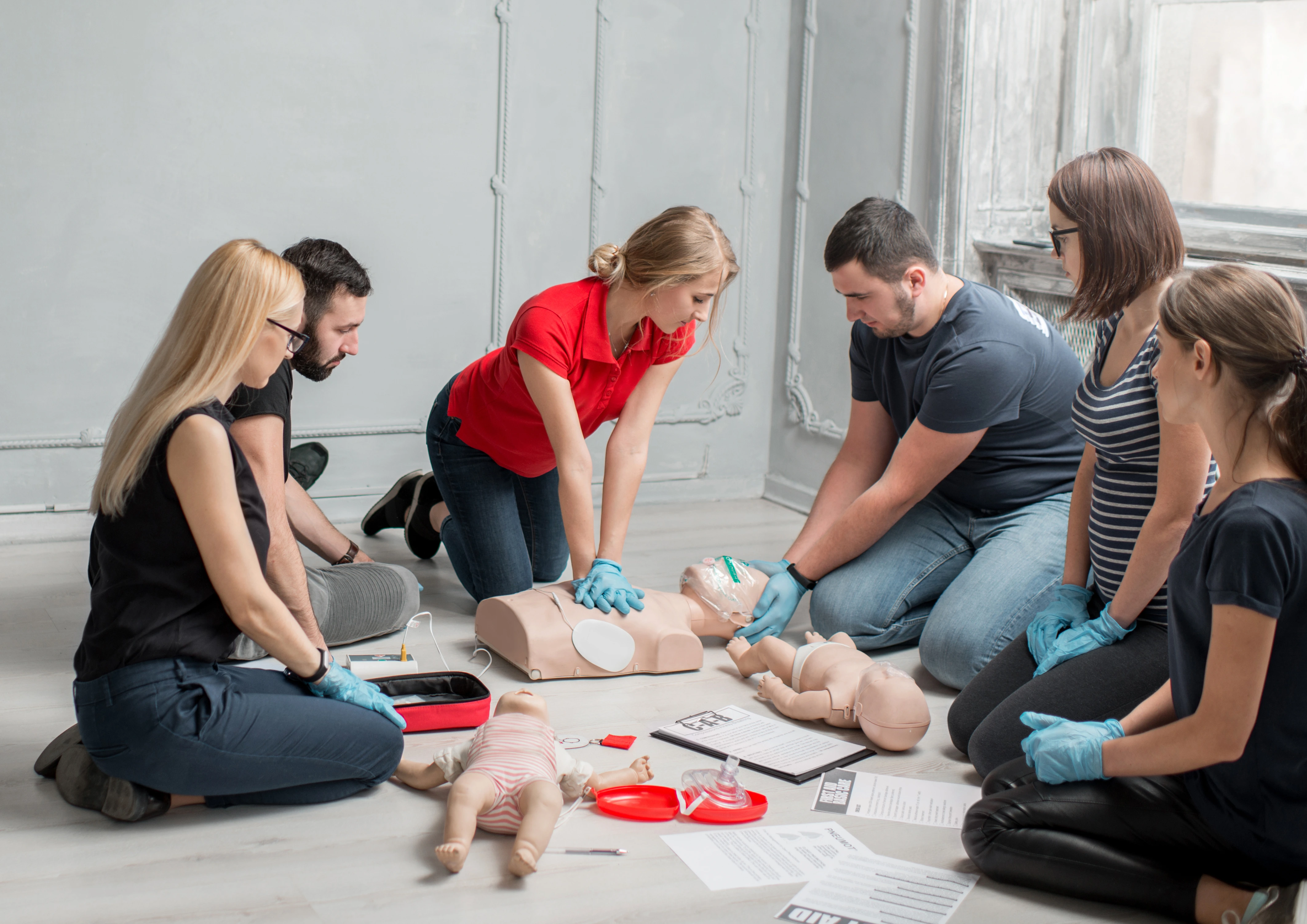Introduction
In today's fast-paced work environment, safety is paramount. Organizations are progressively recognizing the significance of creating a secure room for workers. Among one of the most essential elements of office safety and security training is first help and mouth-to-mouth resuscitation (Cardiopulmonary Resuscitation) courses. These courses not just encourage staff members with crucial life-saving skills but additionally foster a society of safety and security within the company. In this post, we will look into the myriad reasons that work environment safety and security training should include first aid and CPR programs, highlighting their importance in enhancing office safety.
Why Office Safety Training Ought To Consist Of First Aid and CPR Courses
The combination of first aid and CPR programs into workplace safety and security training has far-ranging benefits. They gear up workers with the understanding and abilities necessary to react effectively to clinical emergencies, reduce recovery time for hurt individuals, and possibly save lives. Furthermore, having actually trained personnel on-site can instill self-confidence among employees and reassure them that their well-being is prioritized.
Understanding First Aid
First help refers to the immediate care provided First Aid Courses Near Me to an individual struggling with a minor or significant disease or injury up until specialist medical help shows up. Comprehending fundamental emergency treatment concepts can make a significant difference in emergency situation situations.
Key Elements of First Aid
Assessment: The capability to assess a situation promptly can assist establish the appropriate actions needed. Stabilization: Comprehending how to maintain a harmed individual stops further harm. Communication: Efficiently connecting with emergency situation solutions is essential for prompt assistance.The Relevance of CPR
CPR is a life-saving method utilized in emergencies when a person's heartbeat or breathing has actually stopped. It includes upper body compressions and rescue breaths to maintain blood flow and oxygenation up until expert aid arrives.
How CPR Works
- Chest Compressions: These help distribute blood throughout the body. Rescue Breaths: These offer oxygen to the lungs.
Benefits of First Aid and Mouth-to-mouth Resuscitation Certification
Obtaining an emergency treatment certification or finishing mouth-to-mouth resuscitation courses comes with numerous benefits, both for people and organizations.
Enhanced Worker Confidence: Staff members feel much more safe understanding they possess life-saving skills. Reduced Recuperation Time: Quick response with first aid can bring about far better results for damaged individuals. Compliance with Regulations: Several sectors call for licensed employees as part of their health and safety regulations.
Creating a Culture of Safety With Training
Implementing first aid and mouth-to-mouth resuscitation training promotes a culture that focuses on worker wellness.

Encouraging Teamwork
Training sessions commonly involve team-building workouts that enhance collaboration amongst employees.
Building Depend on Between Employees and Management
When management purchases worker training, it reveals commitment to their health and wellness, bring about enhanced morale.
First Help Courses vs. Mouth-to-mouth Resuscitation Courses: What's the Difference?
While both sorts of training courses are crucial, they concentrate on different ability sets.
First Help Courses
These programs cover a wide variety of topics beyond simply cardiac emergencies, consisting of:
- Wound care Burns Choking
CPR Courses
CPR courses particularly focus on methods associated with cardiac arrest scenarios, emphasizing:

- Adult CPR Child/ infant resuscitation Use of an Automated External Defibrillator (AED)
Choosing the Right Training Provider
Not all training companies are developed equivalent; consequently, CPR Course Near Me selecting one that meets your organization's needs is critical.
Accreditation Matters
Ensure that your chosen provider supplies recognized courses recognized by relevant authorities.
Instructor Experience
Consider trainers' qualifications; experienced trainers frequently offer richer learning experiences with real-world examples.
Incorporating Emergency treatment right into Office Safety And Security Policies
Organizations ought to integrate first aid needs into their wider safety and security plans for extensive coverage.
Regular Training Updates
Conducting regular correspondence course makes sure that knowledge remains current among employees.
Creating Emergency situation Feedback Plans
Having clear strategies in place can guide trained workers throughout emergencies.
Legal Implications of First Aid Training in the Workplace
Employers have lawful obligations pertaining to workplace security; applying emergency treatment training can assist reduce risks related to non-compliance.
Negligence Claims
Failure to give adequate training may leave companies at risk to legal actions if an occurrence happens as a result of absence of preparedness.

FAQ Section
What is consisted of in a typical emergency treatment course?- A regular first aid course includes direction on assessing injuries, treating wounds, handling burns, managing choking occurrences, and carrying out CPR if necessary.
- Most CPR programs last in between 4-- 6 hours depending on whether it's standard or innovative training.
- While not always legitimately mandated, having actually accredited personnel can considerably enhance workplace safety standards.
- Many certified organizations offer on the internet renewal options for first aid certifications which include assessments by means of video conferencing.
- Yes, markets such as building and construction, health care, education, and manufacturing frequently have regulative needs necessitating experienced workers on site.
- It's advised that staff members take part in refresher courses every two years or quicker if there are substantial modifications in treatments or regulations.
Conclusion
To sum up, integrating emergency treatment and mouth-to-mouth resuscitation into workplace security training is not just an alternative however a requirement in today's work environments where emergencies can emerge anytime. Organizations advantage immensely from having trained employees ready to respond properly throughout dilemmas while promoting an ambience where worker health takes priority over all else. For that reason, it comes to be evident why office safety training should include emergency treatment and mouth-to-mouth resuscitation training courses-- they save lives while advertising an aggressive strategy toward health and wellness requirements within companies throughout different sectors.
By focusing on such crucial training initiatives-- first aid certifications acquired via respectable service providers together with useful hands-on experience-- firms can dramatically enhance their overall emergency situation readiness degrees while likewise developing more powerful groups with the ability of taking on any circumstance head-on!